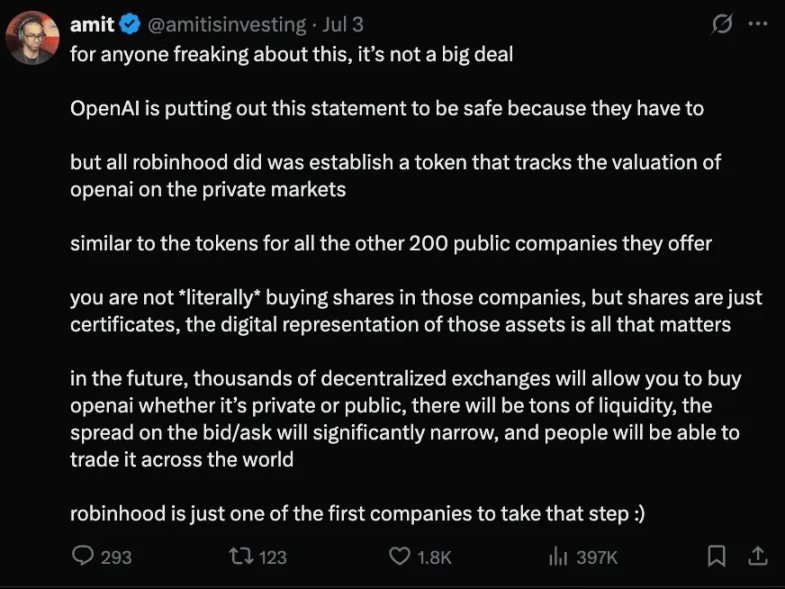If you can make money, join in; if trading volume can be stabilized, infrastructure keeps up, and institutional departments might join, especially in jurisdictions with improved regulatory frameworks.
The early market may look chaotic: insufficient liquidity, large bid-ask spreads, and sudden price jumps on weekends. But derivative markets always start like this, never a perfect replica, more like a stress test - seeing if there's demand before the asset itself adjusts.
There's an interesting aspect to this model, which can be seen as either an advantage or disadvantage, depending on your perspective - the time difference issue.
Traditional stock markets have opening and closing times, and most stock derivatives trade according to stock market hours, but tokenized stocks don't follow these rules. For example, if an American stock closes at $130 on Friday, and a major news breaks on Saturday (like an early financial report leak or geopolitical event), when the stock market is closed, the token might already be fluctuating. This allows investors to factor in news impacts during market closure.
Only when tokenized stock trading volume significantly exceeds traditional stocks will the time difference become an issue. Futures markets address such problems through funding rates and margin adjustments, ETFs stabilize prices through designated market makers and arbitrage mechanisms, but tokenized stocks haven't established these mechanisms yet, so prices might deviate, liquidity might be insufficient, and whether they can closely track stock prices depends entirely on the issuer's reliability.
But this trust is unreliable. For instance, when Robinhood launched tokenized stocks of OpenAI and SpaceX in the EU, both companies denied participation, claiming no collaboration or formal relationship with the business.
This doesn't mean tokenized stocks are problematic, but you must consider: are you buying a price exposure or a synthetic derivative with unclear rights and recourse?

For those feeling anxious about this, it's not a big deal.
OpenAI's statement is just for caution, as they have to do so.
Robinhood simply launched a token tracking OpenAI's private market valuation, just like the 200+ other company tokens on their platform.
You're not actually buying these companies' stocks, but stocks are just certificates - the digital form of these assets is key.
In the future, thousands of decentralized exchanges will emerge, allowing you to trade OpenAI whether it's private or public. Liquidity will be abundant, bid-ask spreads will narrow significantly, and people worldwide can trade.
And Robinhood is just taking the first step.
The underlying architectures of these products are diverse. Some are issued under European regulatory frameworks, while others rely on smart contracts and offshore custody institutions. A few platforms like Dinari are attempting more compliant operations, while most are still probing legal boundaries.
U.S. securities regulators have not yet taken a clear stance. Although the SEC has expressed views on token issuance and digital assets, tokenized traditional stock products remain in a gray area. Platforms are cautious, with Robinhood first launching in the EU, not daring to go live in the U.S.
However, demand is already evident.
Republic platform provides synthetic investment channels for private companies like SpaceX, and Backed Finance packages public stocks and issues them on the Solana chain. These early attempts have never ceased, and their underlying model promises to address participation threshold issues, not financial logic itself. Tokenized stocks might not increase stock holding returns, as they never intended to do so, perhaps just wanting to make participation easier for ordinary people.
For retail investors, the ability to participate is often most important. From this perspective, tokenized stocks aren't competing with traditional stocks but competing on "participation convenience". If investors can get exposure to Nvidia stock's price movements by clicking a few times in a stablecoin app, they might not care whether it's a synthetic product.
Such preferences have precedents. The SPY ETF has proven that packaged products can become mainstream trading markets, as have other derivatives like CFDs, futures, and options. Initially tools for traders, they ultimately served broader user groups.
These derivatives often lead the underlying asset's trends, capturing market sentiment faster in market fluctuations, amplifying fear or greed more quickly than slow-reacting traditional markets.
Tokenized stocks might follow a similar path.
Current infrastructure is still early, with fluctuating liquidity and blurry regulatory frameworks. But the underlying logic is clear: create something that reflects asset prices, is easy to acquire, and makes ordinary people willing to use it. If this "alternative" can stabilize, more trading volume will flow in. Eventually, it won't be just a shadow of the underlying asset but a market bellwether.
Nathan Most didn't initially intend to reshape the stock market; he just saw efficiency gaps and wanted to find smoother interaction methods. Today's token issuers are doing the same, just replacing the old fund "packaging" with smart contracts.
It's worth observing whether these new tools can maintain trust during market downturns. After all, they're not real stocks, unregulated, just "tools close to stocks". But for many people far from traditional finance or living in remote areas, being "close" is enough.








